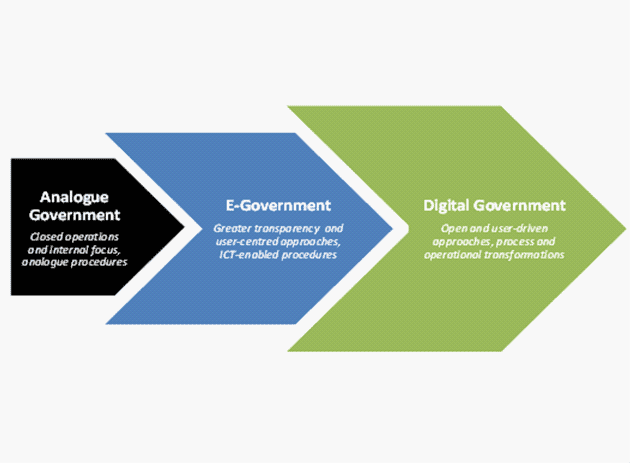In recent years, governments have undertaken large-scale public sector changes to modernise their operating processes, policies and programmes and adapt to new technologies and demands from the public. Digitalisation has become a top priority for many governments and public administrations to achieve outcomes such as the digitalisation of public services, the opening up of public sector data or the establishment of common platforms shared by various public authorities to foster horizontal integration and synergies. Public sector digital transformation is a complex process that revamps both citizens' access to information and services, and the transparency and efficiency of the functioning and structure of public institutions. On the one hand, it is about assisting people through innovative and agile continuous improvement in a streamlined, straightforward and co-constructed partnership with different stakeholders. On the other hand, it is about allowing civil servants to respond to a changing organisation while maintaining the continuity of approaches, daily supervision and assessment, and introducing innovative activities (OECD, 2014[1]).
Majority of countries have made significant progress in digitalising government structures and facilities by transferring to the digital world what was previously paper-based (see Figure 1.1 on the differentiation between e-government and digital government). Becoming a fully digital government involves government-wide co-ordination to foster coherent use of digital technologies across policy areas and all levels of government, and the alignment of actions and practices within and between public sector organisations in line with broad government strategic objectives. Doing so ensures that citizens and businesses can foster partnerships with ease to co-create public policies and programmes to improve economic productivity and social well-being. Governance structures are essential to maintain active management and co-ordination and promote system-based rather than silo-driven decisions. With stronger leadership, co-ordination and collaboration, policy makers can accelerate the digital transformation of the public sector more efficiently, effectively and ensure the stability needed to deliver long-term sustainable outcomes. The most prevalent problems and obstacles are related to legacy-driven organisational structures mainly defined by vertical hierarchical institutional arrangements and silos that hamper the transition toward more consistent capital and programming cycles. Nevertheless, countries are progressively emphasising horizontal integration-oriented behaviour. This is required to promote the use of digital technologies to facilitate links between strategic policy initiatives across different sectors and government levels and to maintain policy coherence and long-term stability. Institutional set-ups need to be re-evaluated and adapted to assist a whole-of-government transition, which delivers better outcomes and helps meet the increasing demands of people (OECD, forthcoming[2]).



